‘This is work that you have to do within’: BLM Day at UMass Boston reflects on progress, opportunities
It's one thing to say "Black Lives Matter". But when people came together for Black Lives Matter Day at UMass Boston, it was for a different purpose: understanding what it means.

“ Let us seize this day, in the service of a stronger, more resilient, more loving, and more inclusive UMass Boston community. ”
Chancellor Marcelo Suárez-Orozco kicked off a day of activism, learning, and reflection with a moving welcome to a ballroom of faculty, staff, and students, and dozens of people who participated online.
“I believe that celebrating Black Lives Matter Day is vital to UMass Boston in our efforts to becoming a leading anti-racist and health promoting institution,” he said. “As a university community of educators and scholars, we seek to expand the essential dialogue about intersecting identities and lived experiences as we continue our endeavors to create a more inclusive, humane, just, and respectful UMass Boston."
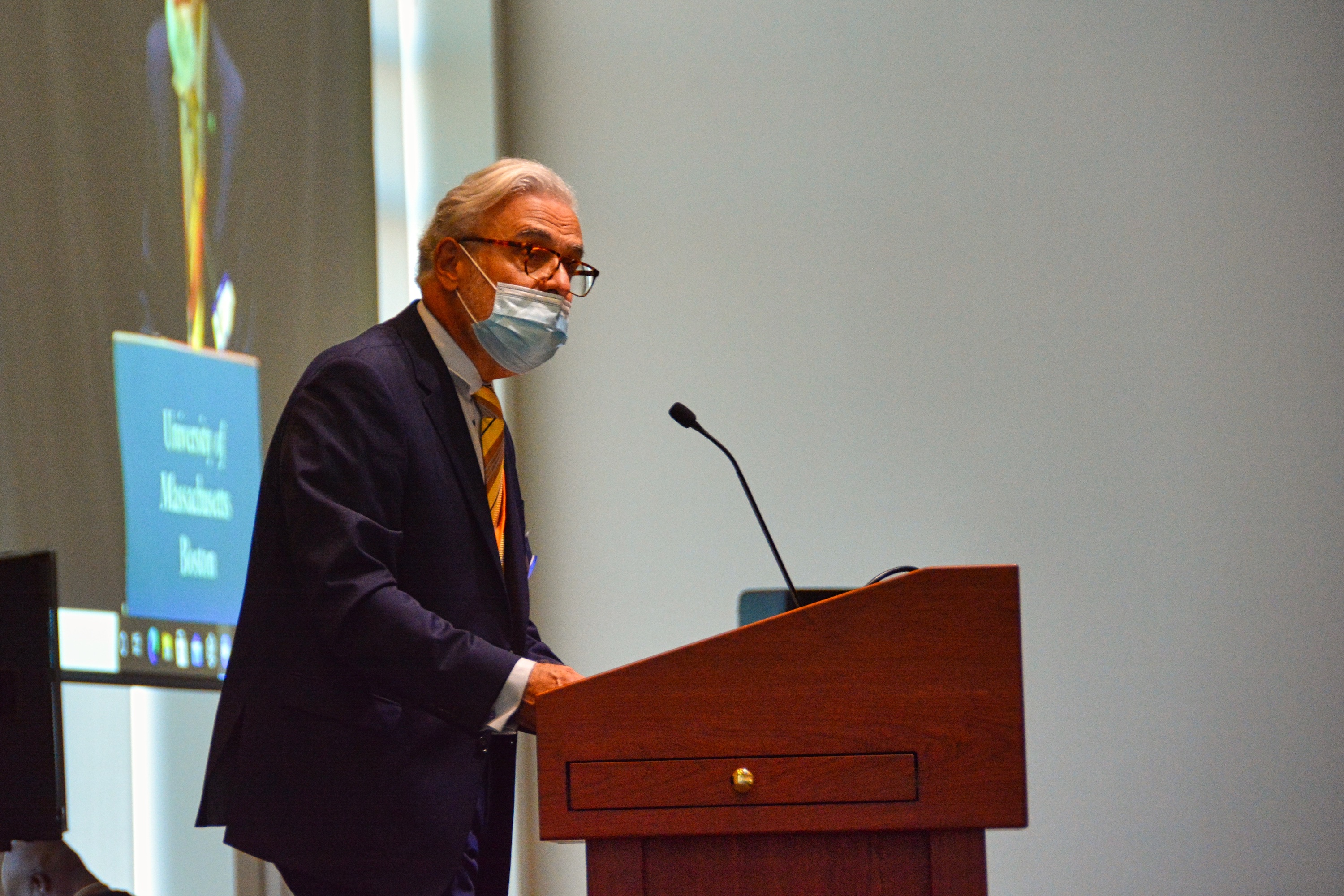
Chancellor Marcelo Suárez-Orozco speaks at Black Lives Matter Day.
Community members engaged in workshops and a panel discussion, learned from expert speakers, and attended a mural presentation all centered on the year’s theme: empowerment through collective leading. BLM Day is intended to represent the university’s commitment to honoring Black lives and eliminating anti-Black racism at the systemic, institutional, and interpersonal levels.
“Let us seize this day, open our hearts and minds, learn, and heed the call to action, in the service of a stronger, more resilient, more loving, and more inclusive UMass Boston community,” Chancellor Suárez-Orozco said.
The event began last year, when Chancellor Suárez-Orozco declared that UMass Boston would commemorate Black Lives Matter Day every year on the first Monday of November.
After listening to opening remarks, the group split off into breakout sessions. Each facilitated by a Black leader from the region, the intimate discussions served as forums for learning about the struggles of the Black community and lifting Blackness and Black spirit. They covered topics including “Queer, Trans, and Black Feminism,” “Empowerment Through Social and Economic Justice,” “Wellness and Centering Black Joy,” “Lifting Black Collective Leadership,” and “Reimagining Community Policing Strategies.”
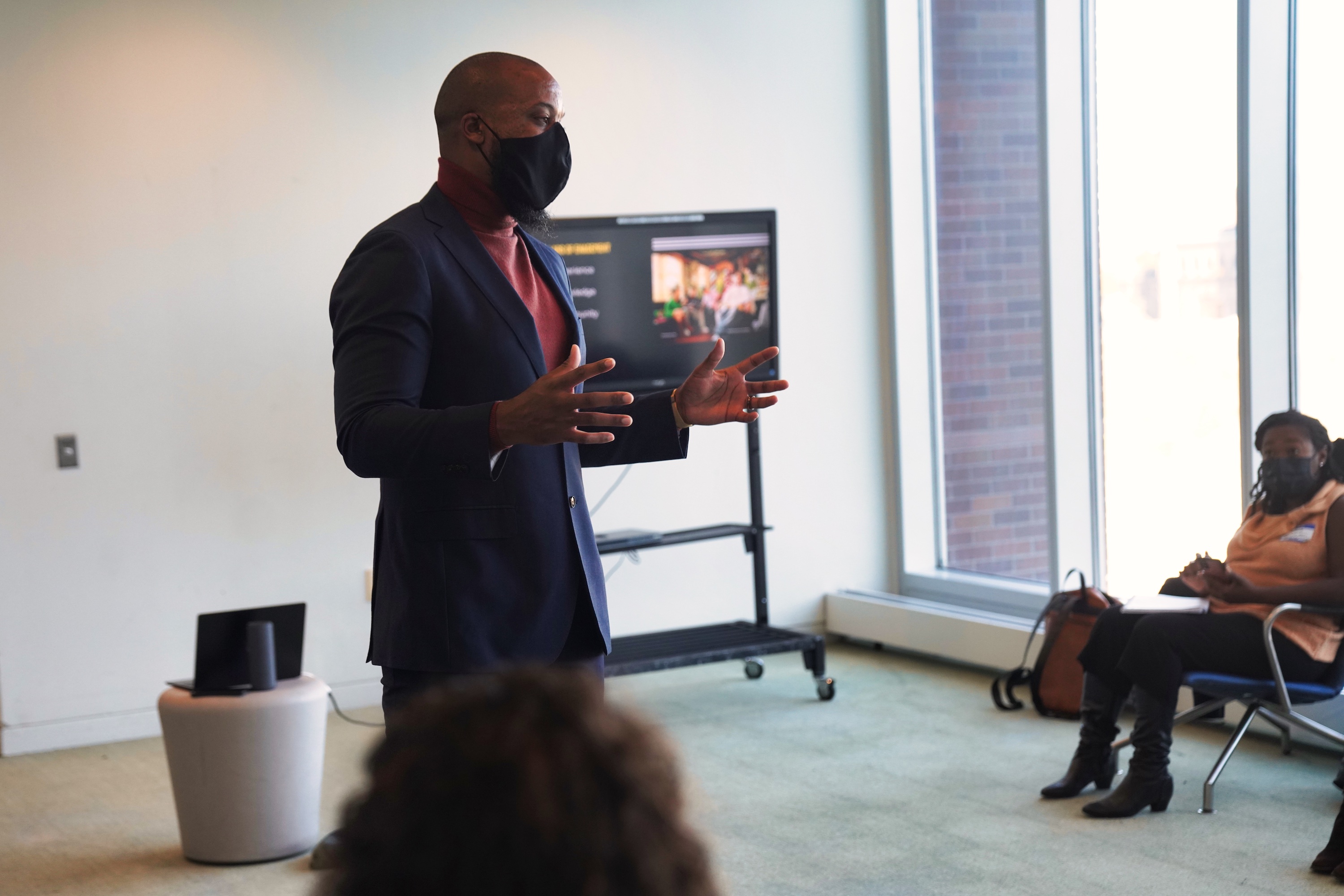
Rev. Carrington Moore speaks at his breakout session, Lifting Black Collective Leadership.
The community then came back together in the Campus Center Ballroom after the sessions to hear from a heavy-hitting panel, including Imari Paris-Jeffries, executive director of King Boston; Segun Idowu, president and CEO of the Black Economic Council of Massachusetts; Sheena Collier, founder and CEO of Boston While Black and the Collier Connection; and Reverend Willie Bodrick, II, senior pastor of the Twelfth Baptist Church.
Moderated by Cynthia Orellana, UMass Boston’s director of community partnerships, the panelists spoke powerfully about the social and economic progress that Black communities have made to this point, and the long road ahead, much of which is being driven by them and their colleagues around the city.
“We’re good with rhetoric, but that does not match our reality,” said Bodrick, speaking about policy and programs around the Black community in Boston. “So it is up to us to put pressure on this city to change that.”
Orellana asked the group what people on campus could do today to contribute to the Black movement.
“We’re in the middle of three pandemics, and a lot of times when we think about doing good, it’s with someone else. But this movement calls for us to do good within,” Paris-Jeffries said. “This is internal work. This is work that you have to do within yourself, and it counts."
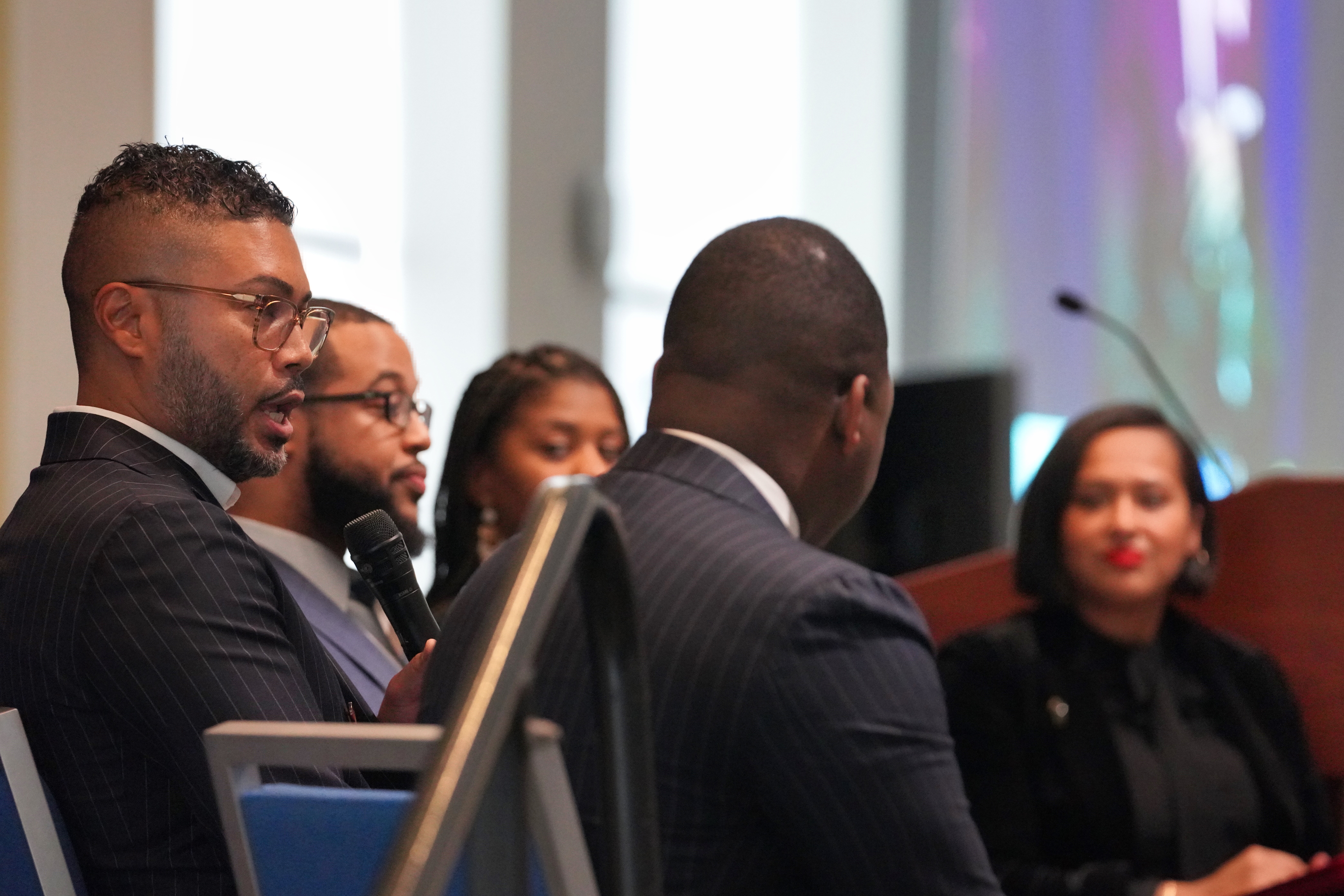
Imari Paris-Jeffries speaks during the panel.
“Speak to your friends, loved ones, and neighbors, and do that mind-changing work. It doesn’t require volunteering or marching, it requires work within.”
After the panel, the audience turned its attention to Andrea James, the founder of the advocacy group Families for Justice as Healing and the day’s keynote speaker.
In a moving presentation, James honed in on the incarceration of women and girls in Massachusetts and around the country, the work that her organization does every day. She spoke about the unjust paths that women take to getting there, often because of the color of their skin, the dismal, inhumane conditions inside of many women’s prisons, and the physical and mental health conditions that result from them, which are extensive.
“We unapologetically advocate to end the incarceration of women and girls, and what that does is leads us to end the incarceration of everyone else,” said James, herself being formerly incarcerated.
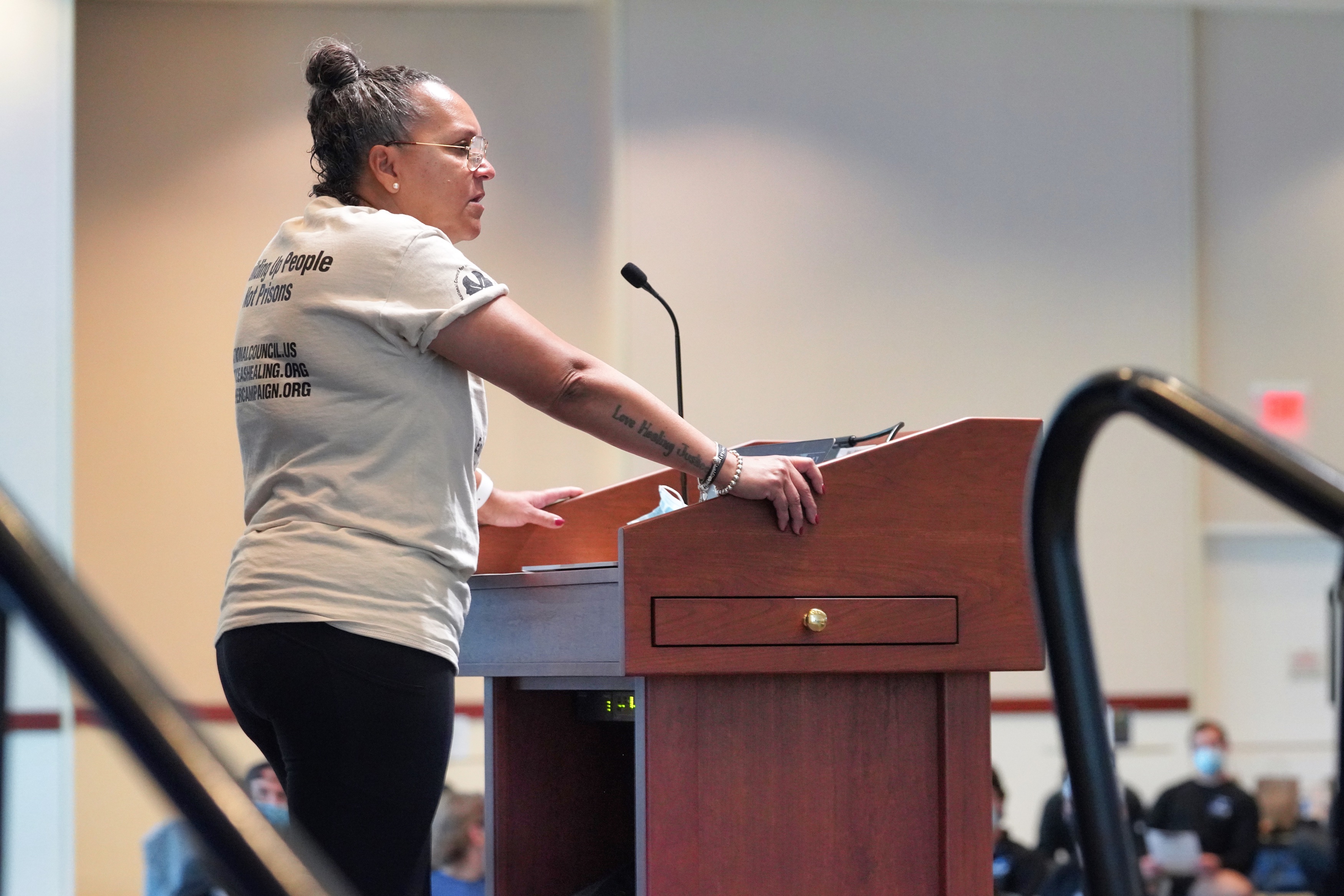
Andrea James, during her presentation on stopping the incarceration of women and girls.
She argued that by taking the money invested in police and prisons, governments could fund programs and policies within the community that would make a bigger difference.
“Those of us that live in the communities that are most affected by harm – we don’t want it. The work that we’re doing is to get to the real cause of harm, to get to real change. … We cannot just accept that police are going to be the answer to the struggles in our communities,” she said.
Following the keynote was the formal presentation of an addition to the Black Lives Matter Mural, made by Pilar Nelson, the community director in the Office of Housing and Residential Life. Added to the mural were 10 names of Black men and women murdered for the color of their skin. The names were read, and the room sat for a moment of silence.
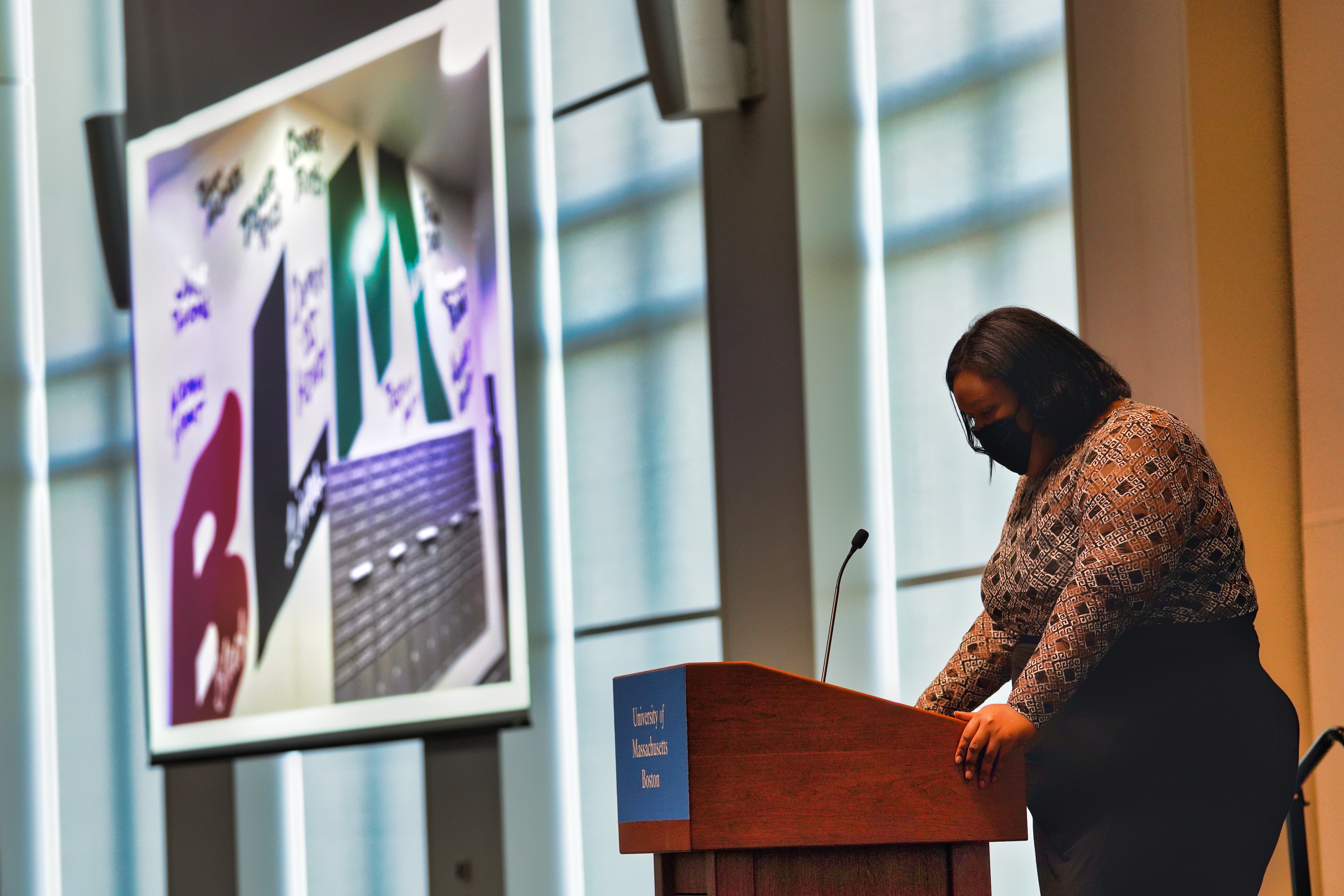
Presenting the BLM mural, Pilar Nelson bows her head in a moment of silence after reading the names added to the mural.
The day wrapped up with a call to action for the UMass Boston community. Standing on a stage flanked by students from the Black Student Center, Assistant Vice Chancellor for Student Affairs Steve Neville made an impassioned ask that the university do more to authentically engage its Black students and move forward Black progress on campus, and by extension, around the city.
“Even as we open up the campus to the incredible beauty of our environment on this peninsula, we must also open it to the dazzling beauty of the cultural environment that is who we are,” he said.
